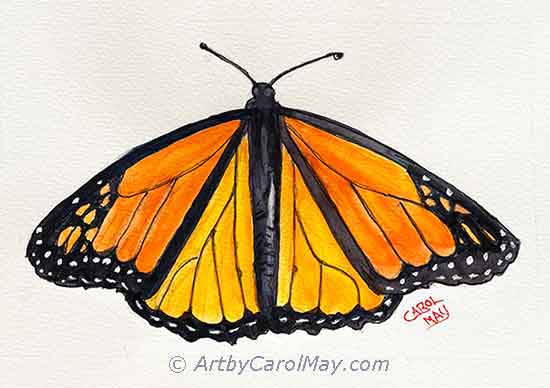- Home
- Begin Painting
- Painting Daily
Can painting daily really help you improve your art?
Yes, painting daily will put your art into overdrive!
There is a current craze among the art community to complete a small painting every day.
Actually, this is not a new concept.
Professional artists over the centuries painted nearly every day. Most often they worked on a larger painting until completion. How else could they turn out so many paintings?
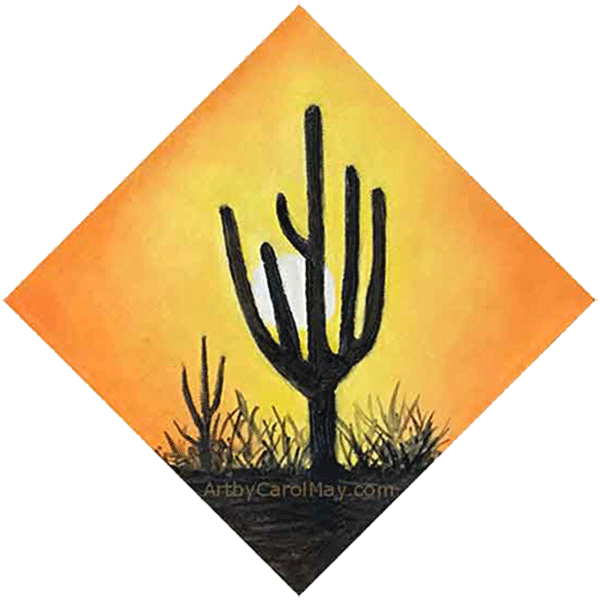 Daily painting speeds up our art journey.
Daily painting speeds up our art journey.who wants to learn to paint?
Artists everywhere (including myself) want to learn more about painting. There is always more to learn!
As long as we keep painting, we are learning.
People often ask, "How long does it take to learn to paint - to become an artist?"
Well, I did my first painting in high school art class, back in the 1960s. Painting has been my hobby ever since. So how many years has that been?
Painting is fun! The more we paint, the more we learn and the better we get.
let me ask you
"How long does it take to learn to play the piano?"
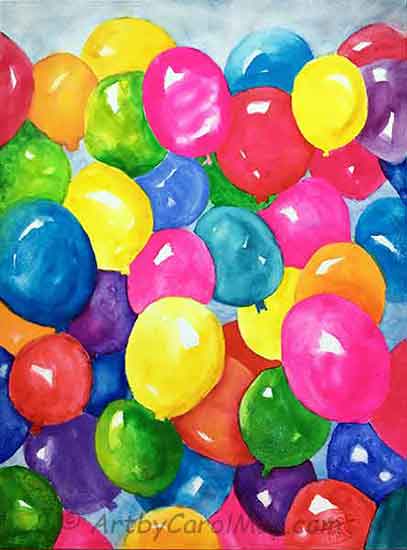 Celebrate painting
Celebrate paintingThere is no exact amount of time to learn to play. It all depends on how much we practice.
When someone starts playing, we don't expect them to immediately play with the symphony orchestra.
Why not?
Before we can play with a symphony it takes time and practice - lots and lots of practice!
How often does a baker go to work in their bakery? Does a
shoemaker work in his shop only once a month?
No, professionals work at their trade often, many times daily.
Repetition makes them excellent at what they do.
how do we learn how to paint?
Learning to paint takes practice, lots of practice.
The hardest step is getting started. Once we get started, it seems like time just flies by because we are so engrossed in the process of painting.
Striving for perfection is another stumbling block. We can't expect to paint a masterpiece every time.
That's doesn't work well. It takes the joy out of painting.
the solution is painting daily
We don't have to paint every day, just more often.
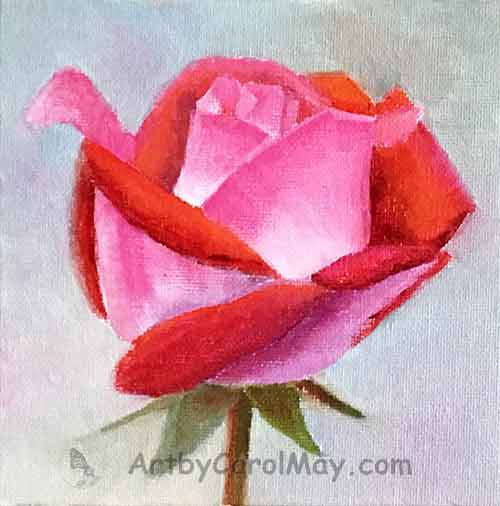 Practicing roses
Practicing roses
Everyone has different time restraints.
Getting started was my stumbling block. I put off painting, waiting for a large block of time.
How often does that happen?!? Rarely, so my painting sessions were intermittent. Sigh!
Don't try to be perfect.
Instead of painting for perfection - call it practice.
Just paint - It doesn't have to be perfect.
You can sell your daily paintings or put them up for sale on eBay.
what do we need for daily painting?
First, a place to paint.
The ideal place is
where we can have our painting supplies ready to go each day. If we can
leave them out and ready to use, it means more time painting.
One thing we should do each day is clean our brushes, so they're ready the next day. Starting the day out by cleaning brushes tends to dampen our painting enthusiasm.
Second, a supply of paints, etc.
Nothing can be more frustrating than running out of paint in the middle of a painting.
Art supplies are so easy to order over the internet nowadays. There is no excuse. We can even have them shipped directly to our house.
Oil painting supplies - Watercolor supplies
 Paint the things around you.
Paint the things around you.Third, what size will we paint?
Decide what size we want to paint. Many of the daily painters do small pieces like 3x3 or 4x4 inches. It doesn't have to square, 3x6, 5x7 and 6x8 are popular sizes.
We may want to paint larger, 11x14, 16x20 or 18x24. When we paint daily on a larger painting will be finished before we know it.
When we paint in the standard sizes, it's easy to find ready-made frames.
Fourth, have a subject.
It's wonderful when we can go out and paint on location.
Most of us paint at home. So, we need a supply of things to paint; flowers, fruit, still life objects, photographs, our dog, children or whatever subjects are available.
Fifth, set a routine.
Set a time for painting each day and hold to the commitment.
Decide
how long to paint. It could be only be
20 or 30 minutes or an
hour or whatever your schedule allows.
It's not how long we paint, it's the commitment and dedication for painting that counts.
painting daily takes child-like faith
A child plays the scale on the piano over and over with dreams of playing in the symphony.
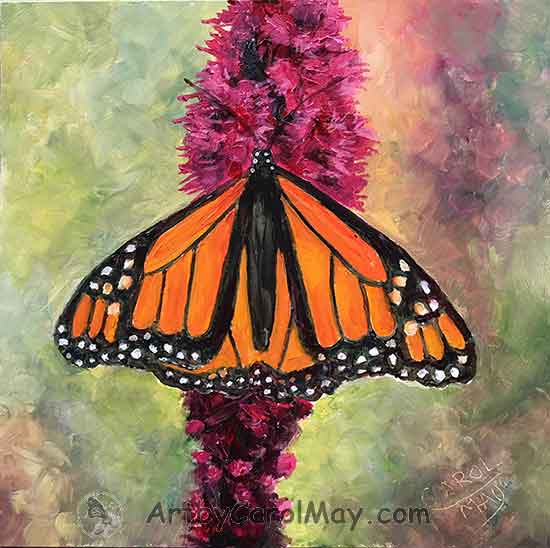 This painting was two days.
This painting was two days.Aspiring artists practice painting on their way to becoming a master artist.
Painting daily is not my habit, but I'm working on making it a regular habit.
You can do it, too!
This Monarch Butterfly painting is on an 8x8 Gessobord panel. It has a smooth surface which is good for painting details with oils.
A 6x6 or 8x8 size makes it easy to complete a painting in a day or two.
From time-to-time I will share a daily painting on this page.
keep painting and enjoy your art journey!
Recent Articles
-
You Can Paint Butterfly Art!
Apr 21, 24 08:31 AM
 Unlock your creativity and start painting butterfly art. Discover the techniques of painting realistic butterflies. Link to 5 different pages on how to paint butterflies with tips and valuable insight…
Unlock your creativity and start painting butterfly art. Discover the techniques of painting realistic butterflies. Link to 5 different pages on how to paint butterflies with tips and valuable insight… -
Learning to Paint
Mar 29, 24 12:00 PM
 Learning to paint is fun! Millions of people are painting and you can too!
Use these five easy things to jump start your painting journey.
Learning to paint is fun! Millions of people are painting and you can too!
Use these five easy things to jump start your painting journey. -
Easy Butterfly Painting: Watercolor Monarch Step-by-Step Tutorial
Mar 25, 24 03:39 PM
Get creative with an easy butterfly painting tutorial. Discover the joy of drawing and painting a vibrant Monarch Butterfly with simple watercolor techniques. -
Overcoming an Artist's Block
Mar 15, 24 12:00 PM
 How to survive an artist's block. All artists can have blocks or delays, but we get over it.
What is an art block? How do we get started painting again?
How to survive an artist's block. All artists can have blocks or delays, but we get over it.
What is an art block? How do we get started painting again?
Recent Articles
-
You Can Paint Butterfly Art!
 Unlock your creativity and start painting butterfly art. Discover the techniques of painting realistic butterflies. Link to 5 different pages on how to paint butterflies with tips and valuable insight…
Unlock your creativity and start painting butterfly art. Discover the techniques of painting realistic butterflies. Link to 5 different pages on how to paint butterflies with tips and valuable insight… -
Learning to Paint
 Learning to paint is fun! Millions of people are painting and you can too!
Use these five easy things to jump start your painting journey.
Learning to paint is fun! Millions of people are painting and you can too!
Use these five easy things to jump start your painting journey. -
Easy Butterfly Painting: Watercolor Monarch Step-by-Step Tutorial
Get creative with an easy butterfly painting tutorial. Discover the joy of drawing and painting a vibrant Monarch Butterfly with simple watercolor techniques. -
Overcoming an Artist's Block
 How to survive an artist's block. All artists can have blocks or delays, but we get over it.
What is an art block? How do we get started painting again?
How to survive an artist's block. All artists can have blocks or delays, but we get over it.
What is an art block? How do we get started painting again?




